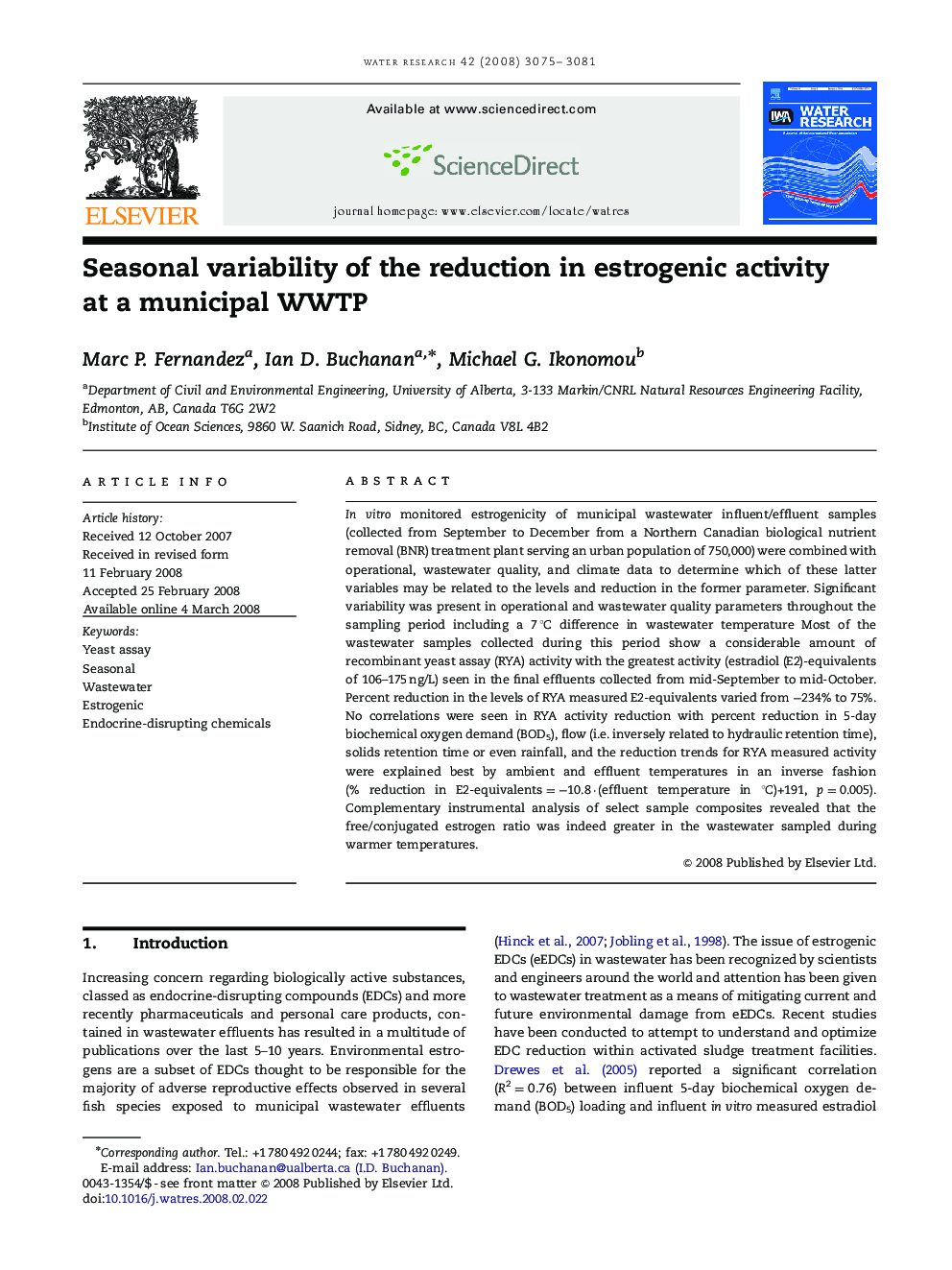| Article ID | Journal | Published Year | Pages | File Type |
|---|---|---|---|---|
| 4485580 | Water Research | 2008 | 7 Pages |
In vitro monitored estrogenicity of municipal wastewater influent/effluent samples (collected from September to December from a Northern Canadian biological nutrient removal (BNR) treatment plant serving an urban population of 750,000) were combined with operational, wastewater quality, and climate data to determine which of these latter variables may be related to the levels and reduction in the former parameter. Significant variability was present in operational and wastewater quality parameters throughout the sampling period including a 7 °C difference in wastewater temperature Most of the wastewater samples collected during this period show a considerable amount of recombinant yeast assay (RYA) activity with the greatest activity (estradiol (E2)-equivalents of 106–175 ng/L) seen in the final effluents collected from mid-September to mid-October. Percent reduction in the levels of RYA measured E2-equivalents varied from −234% to 75%. No correlations were seen in RYA activity reduction with percent reduction in 5-day biochemical oxygen demand (BOD5), flow (i.e. inversely related to hydraulic retention time), solids retention time or even rainfall, and the reduction trends for RYA measured activity were explained best by ambient and effluent temperatures in an inverse fashion (% reduction in E2-equivalents=−10.8·(effluent temperature in °C)+191, p=0.005). Complementary instrumental analysis of select sample composites revealed that the free/conjugated estrogen ratio was indeed greater in the wastewater sampled during warmer temperatures.
